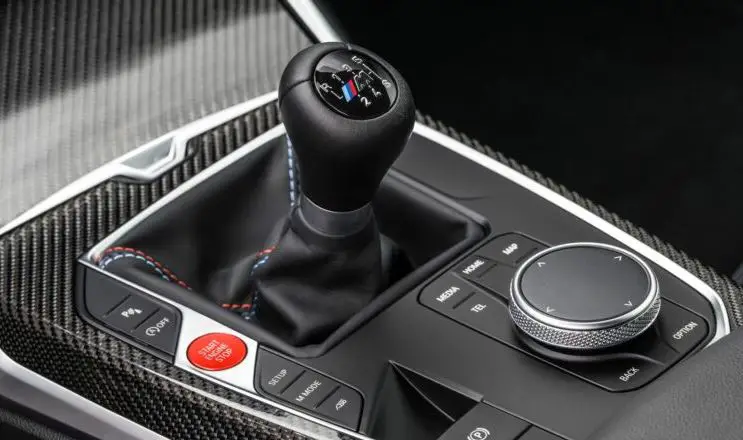Launching a car – rapidly accelerating from a standstill – is both an adrenaline rush and an art, especially when dealing with manual transmissions. Unlike their automatic counterparts, which often feature dedicated launch control functionalities, manual cars offer a raw and connected driving experience that requires skill and understanding to master properly.
Whether for sporting events, emergencies, or simply to test your vehicle’s capabilities, knowing how to launch a manual car effectively and safely can be a rewarding skill to have.
However, it is not without its downsides, including potential damage to the clutch and other components.
In this guide, we navigate the complexities and joys of launching a manual car, offering insights on the best practices, the differences compared to automatic vehicles, and the situations where launching a car is appropriate.
Join us as we explore the world of manual car launching, taking you from preparation to execution, while also touching on the potential implications for your vehicle.
What Does “Launching” A Car Mean?
Car launching is not merely about the thrill of rapid acceleration; it’s a blend of technique, understanding of the vehicle’s mechanics, and the driver’s skill. To master it, one must first have a comprehensive grasp of what it entails and why it’s practiced.
Definition and Background
At its core, car launching refers to the act of accelerating a vehicle from a complete stop to its optimal acceleration in the shortest time possible. Historically, this skill was developed and refined in the world of drag racing, where milliseconds can make the difference between victory and defeat. But beyond the racetrack, it’s found its way into the hands of automobile enthusiasts who simply appreciate the raw power and performance of their vehicles.
Purpose and Benefits of Learning How to Launch a Manual Car
- Performance Testing: Many drivers want to understand the limits of their vehicle, and launching can provide insights into how a car performs under maximum acceleration.
- Enhanced Driving Experience: For manual transmission enthusiasts, launching offers an unmatched sense of control and connection to the car. Every successful launch reinforces the bond between the driver and the machine.
- Practical Application: There could be real-world situations where rapid acceleration from a standstill is necessary, such as merging onto a fast-moving highway or evading a potential road hazard.
However, it’s essential to approach launching with respect, not only for the safety of oneself and others but also for the longevity and health of the vehicle. As we’ll explore further in this guide, launching a manual car is a nuanced skill, balancing power and control, and one that offers both challenges and rewards.
Preparing to Launch a Manual Car
Before attempting to launch your manual car, preparation is crucial. Like any skill that demands precision, setting the right conditions and understanding your vehicle’s health ensures not only optimal performance but also safety.
Ensuring Safety First: Proper Location and Environment
- Choose a Safe Location: Avoid populated areas or busy streets. Empty parking lots, closed tracks, or quiet roads with minimal traffic are ideal. This minimizes risks to other road users and yourself.
- Check Road Conditions: The surface should be dry and free from debris. Wet or icy conditions can reduce traction and increase the risk of accidents.
- Stay Alert: Even in less populated areas, always be aware of your surroundings. Remember, you’re responsible for your actions on the road.
Checking the Condition of the Car
- Tires: Ensure they are adequately inflated and have good tread. Worn out or poorly inflated tires can affect traction, making launching risky.
- Brakes: Ensure that your brakes are responsive. After a rapid acceleration, you’ll need reliable brakes to decelerate safely.
- Clutch: Inspect for any signs of wear or slippage. A worn-out clutch may not handle the stress of launching, leading to damage or compromised performance.
Understanding the Technical Aspects of Your Manual Car
- Know Your Car’s Power Band: Understand where your engine’s peak power is delivered. This knowledge will help you judge the best RPMs to start your launch.
- Familiarize Yourself with the Clutch Engagement Point: The point at which your clutch begins to engage and transfer power to the wheels is crucial during a launch. Being familiar with this can help prevent stalls or excessive wear.
- Limiting Factors: Be aware of any limiting factors your car might have, such as traction control or electronic stability programs. In some cases, these can hinder a smooth launch.
As with any technical skill, preparation is half the battle. Once you’re confident that both you and your vehicle are ready, you can move on to the practical steps of launching your manual car.
How To Launch A Manual Car (Step By Step)
Perfecting the art of launching a manual car involves a series of carefully orchestrated steps, each pivotal in ensuring a smooth, safe, and thrilling acceleration from a standstill. Here, we break down each step, offering detailed insights to help you master the skill:
Step 1: Foot on the Brake and Clutch
Begin by pressing down on the brake pedal with your right foot while simultaneously depressing the clutch pedal fully with your left foot. This prepares your car for a powerful start by allowing you to select the first gear without moving.
Step 2: Engaging the First Gear
With the clutch pedal fully depressed, engage the first gear. Ensure your steering wheel is aligned straight to avoid veering off course as you launch.
Step 3: Revving the Engine to the Appropriate RPM
The next step is building engine power ready for the launch. Slowly release the brake and begin revving the engine to build RPM (Revolutions per Minute) — the optimal range usually lies between 3000 and 4000 RPM, though this can vary depending on your car’s specifications. Keeping the RPM in the correct range ensures a balance between acceleration and control to prevent wheel spin or engine stall.
Step 4: Smoothly Releasing the Clutch
As you maintain the RPM in the optimal range, it’s time to release the clutch gradually but relatively quickly to initiate the launch. This step is perhaps the trickiest, as releasing it too fast can cause the car to stall, while too slow can lead to a burnout. The goal is to find that “sweet spot” where the clutch engages smoothly, facilitating a controlled yet explosive start.
Step 5: Balancing Throttle and Clutch to Prevent Stalling
As you release the clutch, modulate the throttle to maintain the RPM at the desired level. A harmonious balance between the throttle and clutch ensures that the car doesn’t stall, providing a sustained power output for a smooth launch.
Step 6: Gaining Speed and Shifting to Higher Gears
Once you’ve successfully launched and are gaining speed, it’s important to shift up through the gears at the right moments to maintain acceleration. Typically, you would shift up at the point where your engine is producing the maximum power, known as the “power band.” Knowing your car’s power band is crucial here; shifting up too early can cause the car to jerk and lose momentum, while too late can over-rev the engine, risking damage.
Note: It’s advisable to practice these steps in a controlled environment, possibly under the guidance of an experienced driver, before attempting to do it on your own.
Through understanding and mastering each step, launching a manual car can become a skill that offers both excitement and a gratifying sense of control over your vehicle. It takes time to perfect, but with patience and practice, you’ll find that sweet spot where power meets precision, resulting in a successful launch every time.
Automatic vs. Manual Car Launching
The debate between automatic and manual transmissions extends into the realm of car launching, each bringing to the table a set of distinct characteristics. In this section, we will delve into the nuanced differences between launching a manual car as opposed to an automatic one, helping you understand the unique attributes and challenges each presents.
Ease of Use: Automatic Cars
- Launch Control: Many modern automatic cars come equipped with a launch control feature, designed to make launching the vehicle a straightforward process. This system manages engine control and power distribution, essentially doing the hard work for you.
- Consistent Performance: With computerized systems regulating the launch, automatic cars tend to offer a more consistent performance, reducing the chances of errors that could occur due to misjudgments in clutch and throttle control.
Control and Engagement: Manual Cars
- Skill-Based: Launching a manual car is fundamentally a skill-based endeavor. It offers a raw, connected experience, requiring a driver’s finesse and understanding of the vehicle’s mechanics.
- Gratification: For many, the sense of accomplishment derived from a perfectly executed launch in a manual car is incomparable. It is a testament to a driver’s skill and synergy with the vehicle.
The Learning Curve Involved in Manual Car Launching
- Practice Makes Perfect: Mastering the manual car launch is not an overnight achievement. It requires time, patience, and a willingness to learn, gradually improving through repeated practice.
- Understanding Your Vehicle: The path to perfecting a manual launch is also a journey of understanding your car’s unique attributes, including its power band, clutch engagement point, and optimal RPM range for launching.
Comparative Analysis of Launch Control Features in Both Types of Cars
- Manual Overpower: While manual cars lack the digitalized launch control systems found in many automatic vehicles, this absence grants a higher degree of control, allowing for a more personalized launch experience.
- Technology vs. Technique: Automatic cars leverage technology to aid in launching, while manual cars rely heavily on technique. This difference outlines a clear distinction in the experiences both offer, with technology offering convenience and technique promising a sense of accomplishment.
In the final analysis, while automatic cars offer ease and consistency, they might fall short in providing the deep-seated gratification that many derive from the skillful execution of a manual car launch. It all boils down to personal preference: whether you prioritize convenience and modern features or the joy and pride that comes with mastering a skill through hands-on experience.
Potential Negative Implications of Launching a Car
Engaging in the adrenaline-fueled activity of car launching brings a surge of excitement and a deep connection with your vehicle. However, this comes with a set of notable risks and potential damages to your vehicle’s vital components. In this section, we aim to provide a detailed exploration of the negative implications that can accompany car launching.
1)Clutch Wear and Tear
- High Stress Levels
Engaging the clutch at high RPMs during a launch places a significant strain on the system, accelerating the wear and tear process.
- Costly Replacements
The strain from launching can lead to more frequent clutch replacements, a maintenance task that is both labor-intensive and expensive.
- Preventative Measures
To mitigate the negative effects on the clutch, one might consider:
- Engaging the clutch gently to reduce stress on the system.
- Regular inspections to monitor the condition of the clutch, helping to prevent sudden failures.
2)Engine Complications
- Over-revving
Constant high RPMs during launches can put undue stress on the engine, potentially reducing its lifespan.
- Overheating
Repeated rapid accelerations can lead to overheating, putting at risk the internal components of the engine.
- Preventative Measures
To prolong the life of your engine:
- Adhere to your car’s optimal RPM range during launches to prevent over-revving.
- Allow the engine to cool down between launches to avoid overheating.
3)Brake System Deterioration
- Increased Wear
The brake system also experiences quicker wear and tear due to the necessity for rapid decelerations following high-speed launches.
- Safety Hazards
A deteriorating brake system can significantly compromise safety, reducing the effectiveness of your car’s stopping power.
- Preventative Measures
To ensure safety:
- Maintain the brake system regularly to curb excessive wear and tear.
- Engage in responsible launching that doesn’t push the braking system beyond its limits.
4)Tire Degradation
- Shortened Lifespan
Launching tends to result in rapid tire wear, reducing their operational lifespan quite significantly.
- Decreased Traction
Worn tires offer less traction, presenting a considerable safety hazard, especially in adverse weather conditions.
- Preventative Measures
To maintain your tires:
- Ensure the correct tire pressure is always maintained.
- Undertake regular tire rotations to guarantee even wear and prolonged tire life.
5)Legal and Safety Concerns
- Legal Repercussions
Car launching in unauthorized areas can attract substantial legal penalties, including hefty fines and the potential suspension of your driving license.
- Safety Risks
Engaging in this activity on busy roads not only endangers your life but also poses a risk to other road users, raising substantial safety concerns.
- Preventative Measures
To avoid legal and safety issues:
- Always choose a sanctioned area for car launching.
- Be conscious of the safety risks involved and prioritize the well-being of yourself and others at all times.
In conclusion, while car launching can offer an exhilarating experience, it is vital to be aware of the potential negative implications on your vehicle and the broader community. Taking preventative measures and engaging in responsible launching can help you enjoy the thrills without the spills. It is always recommended to undertake such activities in controlled environments to both minimize risks and enjoy the experience safely and responsibly












[…] listen, and Audi is the Latin word for it. If you check its history, Horch 8 was probably the first car launched under Audi in 1910. In 1932, Audi and three other German automakers built the Auto Union and […]
[…] At least rule out these factors first if you drive a manual car. […]
[…] done correctly and in the right context, dumping the clutch can give drivers a quick start, often seen in drag races. However, it’s essential to understand that this technique can be very […]
[…] Emerging from the high-stakes world of racing, two-step launch control is now making a mark in the mainstream automotive scene, promising unparalleled control and performance. By regulating a car’s RPM and effectively managing power distribution during acceleration, it sets the stage for a launch that is not just swift but also perfectly controlled. […]